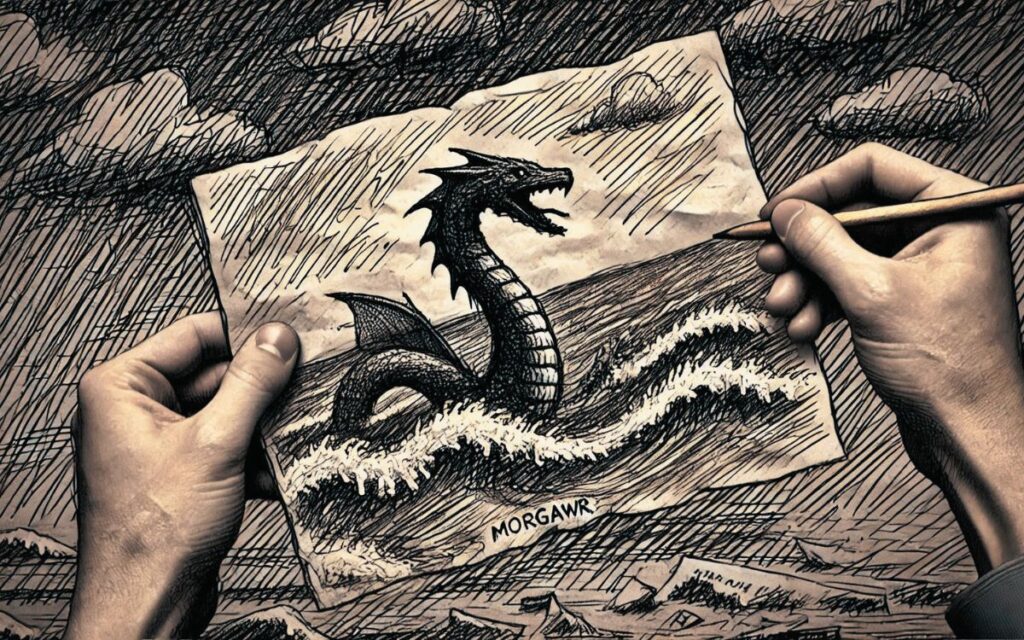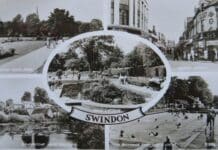The legendary sea serpent Morgawr has intrigued Cornwall’s locals and visitors for over a century, with ongoing sightings fuelling the mystery of what might lurk below

Cornwall, with its rugged coastlines and deep, mysterious waters, has always been a land of legends.
Among its most captivating tales is that of Morgawr, a sea monster said to lurk beneath the waters of Falmouth Bay.
For over a century, sightings of this creature have been reported, leaving locals and visitors alike wondering if there is something monstrous living in the Cornish seas.
Who or what is Morgawr? And why has this cryptic sea serpent fascinated people for so long?
A Sea Monster from the Depths
The name Morgawr is Cornish for “sea giant”, and it’s an apt description for the creature often depicted as a serpent-like beast with a long neck, humpbacked body, and dark skin that glistens like a seal’s.
Legends suggest Morgawr prowls the waters between Rosemullion Head and Toll Point, a stretch of coastline now known as Morgawr’s Mile.
While the story of Morgawr has captured imaginations since at least the late 19th century, it wasn’t until the 1970s that sightings began to truly take hold of the public consciousness.
It was a quiet September day in 1975 when a local woman named Mrs Scott, walking with her friend Mr Riley along Pendennis Point, claimed to have seen something that would haunt her for the rest of her life.
In the clear waters below, they spotted a creature unlike anything either of them had ever seen before: a massive, hump-backed monster with a long neck, short bristles running down its spine, and, most disturbingly, horns protruding from its head.
This was no ordinary sea creature.
Mrs Scott recounted how the beast appeared to be hunting, eventually emerging with a writhing conger eel clenched between its jaws. She would later describe the face of the creature as something she could “never forget”.
The legend of Morgawr had been reignited.
Tony ‘Doc’ Shiels and the Morgawr Photographs
In 1976, the myth of Morgawr took an even stranger turn when Cornish author and paranormal enthusiast Tony ‘Doc’ Shiels claimed to have captured photographic evidence of the beast.
Shiels, a colourful figure known for his interest in occult and supernatural phenomena, sent the images to the Falmouth Packet newspaper.

These photographs, allegedly taken by a woman named “Mary F”, depicted a dark, serpentine figure gliding through the waters near Trefusis Point.
According to the accompanying letter, Mary F described the creature as being 15 to 18 feet long, with a long neck, small head, and humps moving in an undulating manner.
She compared the creature’s skin to that of a sea lion – dark brown and sleek – and expressed her relief that she hadn’t encountered it up close, as it had frightened her even from a distance.
These photos stirred controversy. Many believed them to be proof of Morgawr’s existence, while sceptics dismissed them as clever fabrications.
Shiels, ever the showman, fanned the flames of speculation, and soon the story of Morgawr was all over the British press.
Yet, despite the scepticism, sightings continued to pour in.
In the summer of 1976, fishermen George Vinnicombe and John Cock had their own close encounter with Morgawr. Out on the calm waters off Lizard Point, they spotted what they initially thought was an overturned boat.
As they drew closer, they realised it was no boat – it was alive. A head rose out of the water, perched atop a neck six feet long, and stared directly at them.
The men were experienced sailors who had seen all manner of sea life in their time, but they knew this creature was unlike anything they had encountered before.
Morgawr Through the Years
Reports of Morgawr sightings span over a century.
In fact, one of the earliest references to a strange sea serpent in Cornish waters dates back to 1876, when two fishermen claimed to have caught a giant snake-like creature in Gerrans Bay. According to their account, the beast had wrapped itself around their crab pots.
After a struggle, they managed to bring it ashore, where it was killed and thrown back into the sea.
Another remarkable sighting occurred in 1935, when witnesses described a massive creature, 40 to 50 feet long, swimming up the coast near Port Isaac.
It had a large, goose-like neck, a hump resembling a barrel, and a powerful tail. The witness also described the creature’s unnervingly large head, which loomed above the water as it propelled itself with an undulating motion.
Perhaps one of the most famous pieces of supposed evidence came from a former Natural History Museum worker, John Holmes, in 1999.
He released footage of what he believed to be a plesiosaur – an ancient marine reptile thought to have died out 65 million years ago—off Gerrans Bay.
The footage showed a long-necked creature, with Holmes insisting that it was proof of a living fossil.
Though marine biologists would later dismiss it as a sunfish, Holmes remained adamant that what he saw was no ordinary sea creature.
Cryptozoology or Myth?
Morgawr is far from the only sea serpent to feature in cryptozoological lore.
Across the globe, similar creatures have been reported for centuries, from Scotland’s Loch Ness Monster to the Swedish Storsjöodjuret.
But what makes Morgawr so intriguing is not only the frequency of its sightings but the consistency in the descriptions.
Sceptics argue that many of these sightings could be explained by known marine animals, such as basking sharks, which have large dorsal fins that can be mistaken for the humps of a serpent.
Others point to floating debris, or even hoaxes, as possible explanations. However, believers counter that the sheer number of sightings over such a long period, often by experienced fishermen and sailors, cannot be easily dismissed.
Could Morgawr be a relic from another time, a creature that somehow evaded extinction? Or is it simply a figment of the imagination, bolstered by years of folklore and media frenzy?
The Lure of the Unknown
What continues to draw people to the legend of Morgawr is the tantalising possibility that something unknown still lurks in the depths. Morgawr represents a connection to a wilder, more mysterious world – a world where sea monsters might still exist, unseen by modern eyes.
There’s something irresistible about the idea that, in an age when technology can map the ocean’s floor and satellites can monitor vast expanses of water, a creature like Morgawr might still evade capture.
For those who have glimpsed the creature, or believe in its existence, Morgawr is a reminder that the natural world is full of surprises, and that the seas, though well-travelled, are far from fully explored.
Even today, the waters off Falmouth Bay attract cryptid hunters, researchers, and curious tourists, all hoping to catch a glimpse of Cornwall’s most famous sea serpent.
Whether Morgawr is a living creature, a trick of the light, or a manifestation of collective imagination, one thing is certain – the legend endures. And as long as the waves continue to lap against the Cornish coast, the possibility of Morgawr remains.
Maybe Morgawr is real, a relic from another age that still calls the Cornish waters home. Or perhaps it’s a manifestation of our desire for something beyond the ordinary. Either way, Morgawr’s legend will likely continue to haunt the shores of Cornwall for generations to come.
What do you think of Cornwall’s Morgawr? Tell us in the comments section below!







